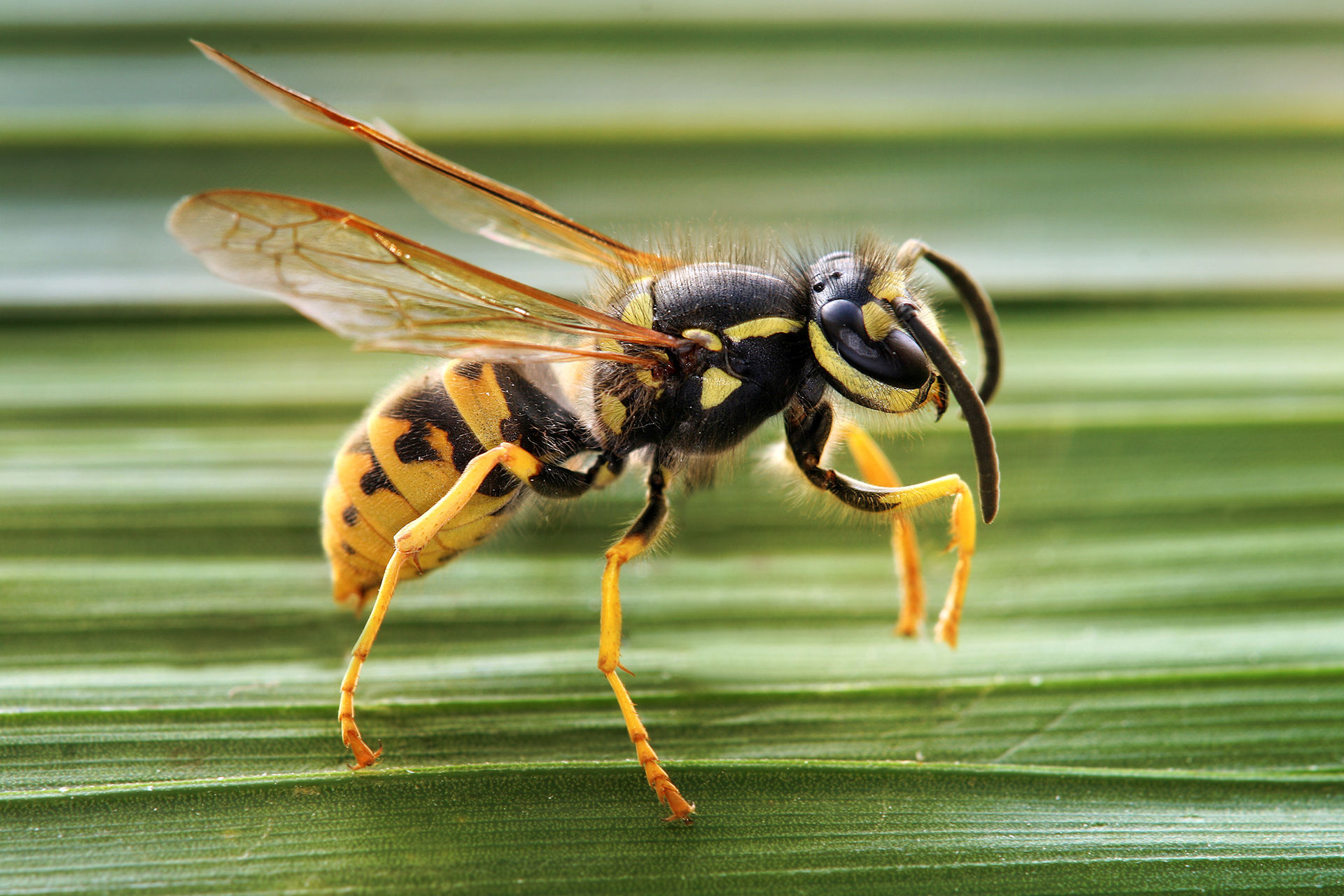European Honey Bees
Notice the wax comb on the wooden framesBees, particularly honey bees, have been in the news often over the past few years, mainly due to their decline as a result of colony collapse disorder.
Honey Bee Workers
Honey Comb in the Making
Photo Credit: Gordon Fountain, 2016
Worker Bee Filling Comb
Photo Credit: Gordon Fountain, 2016
Although honey bees are not native to North America, we have come to depend on them as important pollinators for a large portion of our crops. They are beneficial mainly for their pollination services, and more famously for their honey and wax.
Other bee species that are native to North America include bumble bees and many species of solitary bees. These are also important pollinators, although they do not live in hives the way honey bees do, and do not produce honey.
Common Bumble Bee
Large and "furry"By Paul Stein from New Jersey, USA - Azalia Blossoms, CC BY-SA 2.0, https://commons.wikimedia.org/w/index.php?curid=51253464
Blue Orchard Bee
CC BY-SA 3.0, https://commons.wikimedia.org/w/index.php?curid=114919
This is a Yellow Jacket WaspBy Richard Bartz, Munich aka Makro Freak - Own work, CC BY-SA 2.5, https://commons.wikimedia.org/w/index.php?curid=2577167
Wasp Building a Paper Nest
By Sanjay Acharya - self-made at Sunnyvale, California, USA, CC BY-SA 3.0, https://commons.wikimedia.org/w/index.php?curid=3952953Bees and wasps are also different in their behaviour. Since wasps are predators, they tend to be much more aggressive than bees. The exception is Africanized honey bees, which were introduced to North America in an effort to increase honey production, They are know for their aggression, but they also require a warmer climate than is found in Canada. Honey bees and other bees generally only sting when their safety or the safety of the hive is in question. Drones (male bees) cannot sting. If you are not opening up or tearing apart their hive, blocking their flight path to the hive or inadvertently crushing them, you are unlikely to be stung by a bee.
In the off chance you do get stung, the pain can be reduced by adding baking soda and/or crushed plantain (the common "weed", not the banana-like fruit) to the area. Watch for symptoms of anaphylaxis.
There is a small proportion of the population that is allergic to stings, and these stings could include hornet, wasp or bee stings. Learning to distinguish between these could become a matter of life and death for those affected.
Common PlantainBy Rasbak - Own work, CC BY-SA 3.0,
https://commons.wikimedia.org/w/index.php?curid=210595



.jpg)



